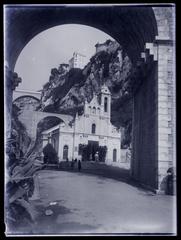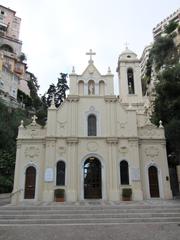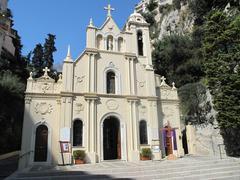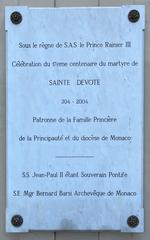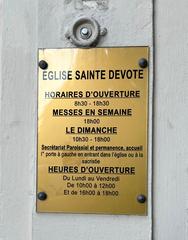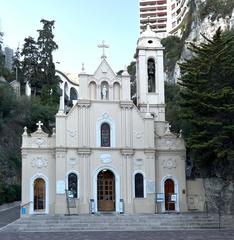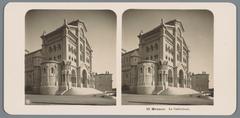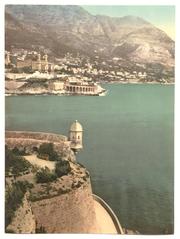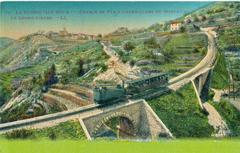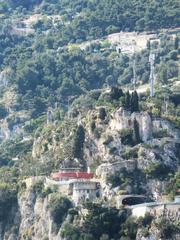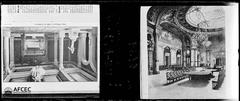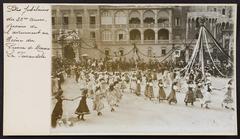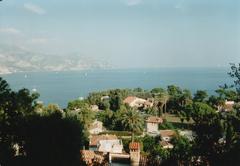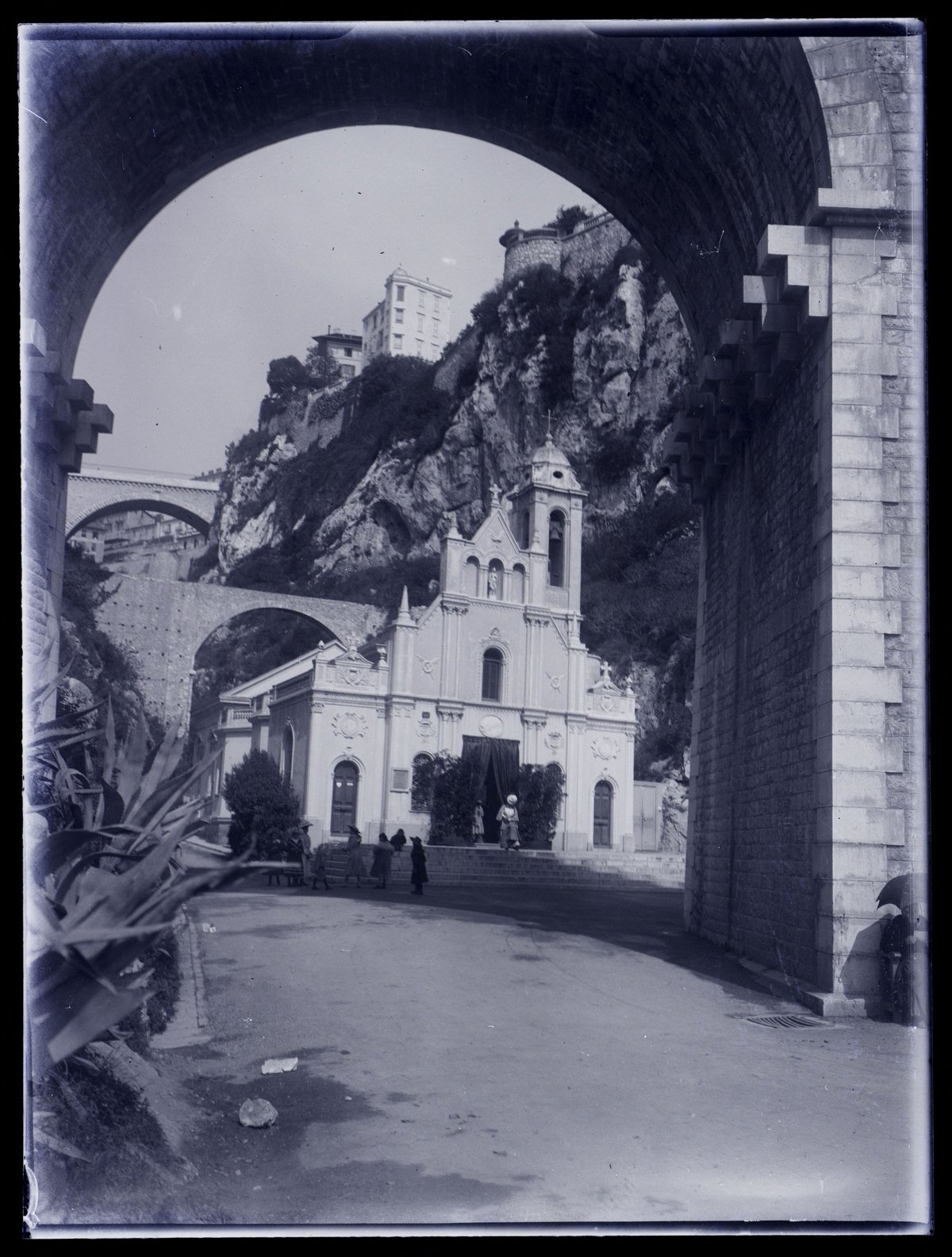
Sainte Dévote Chapel Monaco: Visiting Hours, Tickets, and Historical Significance
Date: 15/06/2025
Introduction: The Historical and Cultural Importance of Sainte Dévote Chapel
Sainte-Dévote Chapel, located in the heart of Monaco, is an enduring emblem of the principality’s spiritual heritage and national identity. Dedicated to Sainte Dévote, the patron saint of Monaco, the chapel stands as a place of pilgrimage, veneration, and communal tradition. The legend of Sainte Dévote, a young Christian martyr from Corsica whose relics are said to have miraculously arrived in Monaco in the early 4th century, provides the foundation for the chapel’s historical and cultural significance. Over centuries, this story has shaped Monaco’s religious landscape and fostered vibrant annual festivities that intertwine faith, folklore, and national pride (monte-carlo.mc; en.gouv.mc).
Today, visitors are welcomed into the chapel’s serene 19th-century interior, where spiritual devotion coexists with the celebration of Monaco’s unique traditions. Whether attending a mass, participating in the annual Sainte Dévote Festival, or simply reflecting on the chapel’s tranquil grounds, guests gain a deeper understanding of Monaco’s cultural heritage and royal customs (visitmonaco.com; provencelovers.fr).
This guide offers a detailed exploration of Sainte-Dévote Chapel’s compelling history, practical visitor information, and the unique experiences awaiting those who choose to discover one of Monaco’s most treasured sites.
Overview: What This Guide Covers
- The Legend and History of Sainte Dévote
- The Chapel’s Role in Monegasque Identity
- Annual Celebrations and Rituals
- Visiting Hours, Tickets, and Accessibility
- Special Events and Guided Tours
- Visitor Experience, Etiquette, and Tips
- Location, Directions, and Nearby Attractions
- Frequently Asked Questions (FAQ)
- Recommendations for Enhancing Your Visit
- Official Sources and Further Reading
The Legend and Historical Roots of Sainte Dévote Chapel
Sainte Dévote: Martyrdom and Miraculous Arrival
Sainte Dévote, also known as Santa Devota in Italian, was a young Christian woman from Corsica martyred during the Roman Empire’s persecution of Christians in the early 4th century. As legend recounts, after her death, her followers sought to protect her remains by placing them in a boat intended for North Africa. A violent storm threatened the voyage, but a dove miraculously guided the boat safely to the shores of Monaco on January 27, 303 or 304 AD. This miraculous arrival is commemorated as Sainte Dévote’s Day and forms the basis for the chapel’s enduring significance (monte-carlo.mc; saintedevotemonaco.com; hellomonaco.com).
The Chapel Through the Centuries
The original votive chapel, first documented in 1070, was built on the site where Sainte Dévote’s relics were believed to have landed. The current structure dates to 1871, constructed under Prince Charles III, yet preserves the location’s sacred purpose and its central role in both religious and civic life (provencelovers.fr).
Patronage, National Identity, and Royal Tradition
Sainte Dévote was officially declared the patron saint of Monaco in the 17th century under Prince Honoré II. Her veneration permeates Monegasque culture, and her story is reflected in literature, art, music, and civic rituals. Notably, it is a tradition for the bride of the Sovereign Prince of Monaco to lay her wedding bouquet at the chapel, symbolizing the continuity of faith and tradition (thecrazytourist.com).
The Sainte Dévote Festival: Rituals and Community Celebration
The Burning of the Boat
A highlight of Monaco’s annual calendar, the Sainte Dévote Festival on January 26 and 27 commemorates the legend of thieves who tried to steal the saint’s relics by boat. The vessel was set ablaze as an act of reparation—a tradition now reenacted annually with the burning of a symbolic boat, presided over by the Princely Family. This event, along with processions and blessings, draws large crowds and reinforces the bond between the saint, the royal family, and the citizens (news.mc; en.gouv.mc; monaco-tribune.com).
Processions, Masses, and Musical Heritage
On January 27, a pontifical Mass is celebrated at Monaco Cathedral, followed by a solemn procession of the relics through the city, with blessings bestowed upon the palace, city, and sea. The festival’s music—from traditional hymns to orchestral performances—further enriches the spiritual and cultural atmosphere (news.mc).
Visiting Sainte-Dévote Chapel: Hours, Tickets, and Practical Information
Location and Access
- Address: 1 Rue Sainte-Dévote, 98000 Monaco
- Setting: In the Vallon des Gaumates, near Port Hercule and the Monte Carlo district
- Public Transport: Bus lines 1, 2, 3, and 6 stop at “Princesse Antoinette – Gare” (Provence Lovers)
- Nearest Parking: Sainte-Dévote underground parking lot; early arrival is recommended during events
- Walking Directions: Easily reachable from the train station or port area; follow local signage (Evendo)
Visiting Hours and Admission
- General Hours: Open daily, usually from 9:00 AM to 6:00 PM (last entry 5:45 PM), but hours may vary on holidays and during events. Always check the official parish website or Monaco’s tourism portal for current times.
- Admission: Free; no tickets required
- Recommended Visit Duration: 10–20 minutes depending on your interests (Provence Lovers)
Accessibility
- Physical Access: The chapel is accessible by foot, though there are steps at the entrance and the area is slightly inclined. Wheelchair users may need assistance (Provence Lovers).
- Festival Accessibility: Reserved viewing areas are set up for persons with reduced mobility during major events (Mairie de Monaco).
- Facilities: No public toilets onsite; restrooms are available nearby in Port Hercule.
Visitor Experience and Etiquette
What to See
- Relics of Sainte Dévote: The chapel’s reliquary is a focal point for veneration (Provence Lovers).
- Polychrome Marble Altar: Features the Grimaldi family coat of arms, commissioned by Prince Antoine I.
- Stained Glass and Artworks: Depict scenes from Sainte Dévote’s life, including the symbolic dove.
- Sculpture: A life-size statue of Sainte Dévote with a boat and dove, created by Cyril de la Patellière (1997).
- Organ: Above the entrance, also adorned with the Grimaldi arms.
Recommended Visit Flow
Begin at the side altars, explore the nave and choir, and take time to appreciate the stained glass and main altar (Provence Lovers).
Dress Code and Conduct
As it is an active place of worship, visitors are expected to dress modestly and maintain respectful silence, especially during services. Photography is allowed, but avoid flash and be discreet during ceremonies.
Special Events, Guided Tours, and Best Times to Visit
Sainte Dévote Festival (January 26–27)
- Mass in Monégasque: 10:30 AM on January 26
- Procession: Begins at the Grand Prix chicane at 6:30 PM
- Boat Burning Ceremony: 7:45 PM at Quai Albert Ier, with drone show at 8:15 PM
- Pontifical Mass: 10:00 AM on January 27 at Monaco Cathedral (Monaco Life; Monaco Tribune)
Guided Tours
Available through Monaco’s tourism office or the Cathedral Visitor Center. Early booking is recommended, especially during festivals (visitmonaco.com).
Best Times to Visit
For a quiet experience, visit outside mass times. For cultural immersion, attend during the Sainte Dévote Festival; however, expect large crowds.
Nearby Attractions and Amenities
- Port Hercule: Adjacent district with dining, cafés, and scenic views.
- Monaco Grand Prix Circuit: The first corner is named after Sainte Dévote (Wikipedia).
- Prince’s Palace, Monaco Cathedral, Oceanographic Museum: All within walking distance.
- Dining: Numerous restaurants nearby, including “Supernature” (Provence Lovers).
- Accommodation: Hotels such as Miramar and Port Palace are within ten minutes’ walk.
Frequently Asked Questions (FAQ)
What are the chapel’s visiting hours?
Open daily, usually 9:00 AM–6:00 PM, but check the official parish website or Visit Monaco before your visit.
Is there an admission fee?
No, entry is free.
Are guided tours offered?
Yes, through Monaco Tourism and the Cathedral Visitor Center.
Is the chapel accessible for visitors with disabilities?
Partial physical access; some assistance may be needed for wheelchair users. Festival events provide special viewing zones.
Are photos allowed?
Yes, but avoid flash and be discreet during services.
What is the closest public transport stop?
“Princesse Antoinette – Gare” bus stop.
When is the Sainte Dévote Festival held?
January 26–27 each year.
Recommendations for Enhancing Your Visit
- Download the Audiala app for real-time event notifications and audio guides.
- Plan ahead during the Sainte Dévote Festival for security checks and crowds.
- Explore nearby historical sites to enrich your understanding of Monaco.
- Observe local customs: Participate in or respectfully observe religious traditions and ceremonies.
Summary and Visitor Recommendations
Sainte-Dévote Chapel stands as a cornerstone of Monaco’s religious, historical, and cultural life. Its origins in the legend of a young martyr, its role in royal and civic tradition, and its annual festival make it a must-visit site for anyone interested in Monaco’s heritage. With free admission, accessible location, and opportunities to witness unique traditions such as the burning of the boat, the chapel provides a memorable and meaningful experience. Always consult official resources for the latest visiting hours and event schedules, and consider using mobile applications or guided tours to enhance your visit (hellomonaco.com; monaco-tribune.com).
Whether you come for the spiritual atmosphere, the cultural festivities, or the connection to Monaco’s iconic Grand Prix route, Sainte-Dévote Chapel offers a profound journey through the principality’s soul (monte-carlo.mc; visitmonaco.com).
